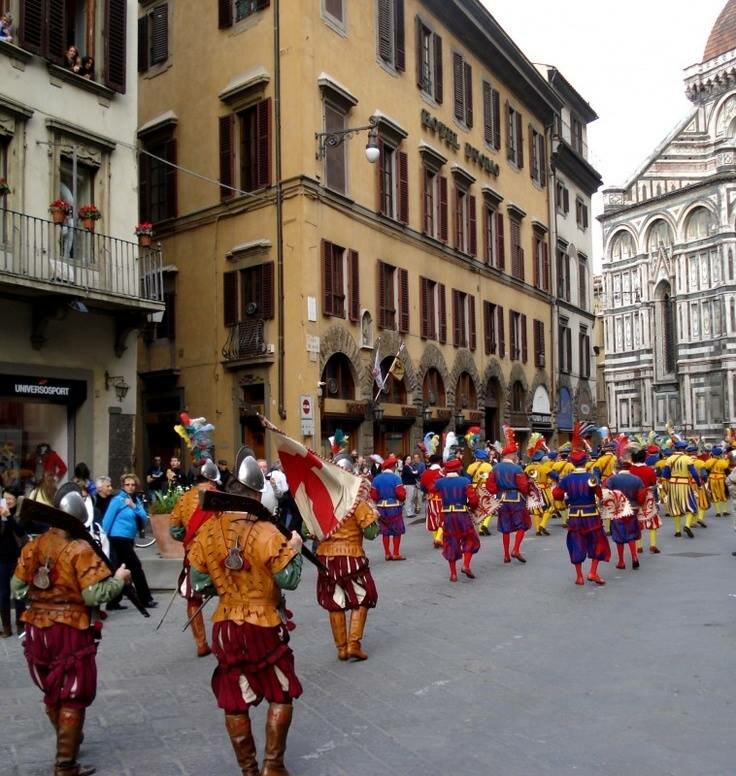Till 1750 in Florence we were celebrating New Year on day March, 25th and not January, 1st. Nowadays we call it traditional Florentine New Year (Capodanno Fiorentino).
It coincided with feast of the Annunciation, important Christian celebration. During the centuries, till 1750, Florentines always gathered on that date in Santissima Annunziata square. They welcomed the arrival of spring as well as commemorating the anniversary of the Annunciation, or the conversation between Archangel Gabriel and Mary when the angel gave Mary the news of her divine pregnancy (you can notice it’s exactly nine months before Christmas). In 1541, when the Gregorian calendar was implemented by Pope Gregory XIII, the city of Florence refused to adopt both the calendar and the official New Year.
It wasn’t until 208 (!) years later, in 1749, that Grand Duke Francesco I of Lorraine imposed a city-wide law to observe the New Year on January 1st.
The city recommenced to mark the observance of March, 25th, as Florentine New Year in 2000 just as traditional feast, with the exception of 2020 and 2021 (due to the Covid-emergency).
In the Santissima Annunizata church you can find medieval fresco of the Annunciation that was once the centerpiece of Florentine New Year festivities. It’s located on inner wall to the left of the entrance. They say, that, in 1252, while an artist, one of the monks, was painting a fresco of the scene of the Annunciation, he fell asleep with only Virgin Mary’s face still to finish, he was too tired since he was trying too long to depict Virgin’s face with all her sacred and proper beauty. When he awoke, her face was miraculously done. It is believed that angels did the work for the artist, representing a miracle for the church, and the city.
You can also read more about Santissima Annunziata church in our previous article: Santissima Annunziata church
And despite ongoing Covid-emergency, we send you our virtual greeetings from Florence and wish you a Happy Florentine New Year!

